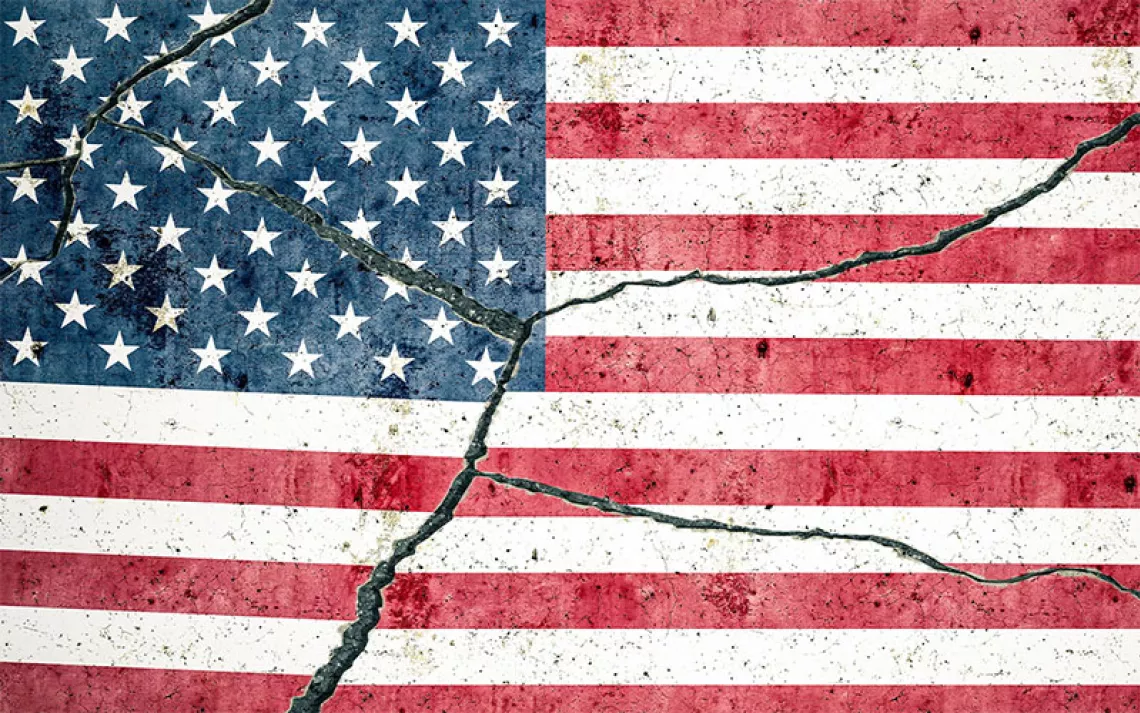What the U.S. Environmental Movement, Poised to Battle Trump, Can Learn from Canadians’ Long Struggle Against Stephen Harper
Fight oil and gas projects wherever they appear, make new friends and allies, and never give up

Photo by PaulMcKinnon/iStock
A decade before Donald Trump made clear his intention to support fossil fuel development in every conceivable way, another North American leader did precisely that—with disastrous results.
Like President Trump, Stephen Harper, Canada’s prime minister from 2006 to 2015, pinned his political destiny on oil and gas. He stacked his cabinet with fossil fuel partisans, eviscerated environmental laws designed to regulate oil and gas extraction and pipeline development, and withdrew his country from the Kyoto Protocol, which committed Canada to modest cuts in greenhouse gas emissions. Yet in a November 2015 election, Harper was cast out of office with Canada’s oil and gas industry and his Conservative Party in disarray, the tar sands region at the heart of Canada’s oil industry suffering from huge construction layoffs, and none of his energy objectives fulfilled.
Low oil prices played a significant part in the debacle. But Harper also overreached, just as Trump is poised to do. As Keith Stewart, a Greenpeace Canada climate campaigner, told me by phone, “Harper tilted the playing field so much in favor of the fossil fuel interests that people stopped believing it was a fair process.” To meet his goals, Harper planned to build 10,000 miles of pipelines extending east, west, and south from Alberta’s landlocked tar sands, where most of Canada’s crude oil is located. But pipelines that required the elimination of environmental laws to get approval looked suspect and lost legitimacy. The result was that not a single major pipeline was built during Harper’s tenure.
Harper’s government muzzled government climate scientists, eliminated funding for climate-related scientific studies, and closed scientific libraries, sometimes destroying invaluable collections in the process. He made life miserable for environmental nonprofits by subjecting them to elaborate financial audits (some of which are still in progress), and one of his ministers suggested they were guilty of treason for “undermining Canada’s national economic interest.” Canada’s national health agency accused an Alberta doctor of professional misconduct for reporting that an unusually high number of rare cancers were showing up in indigenous people living downstream from the tar sands.
All this backfired, too. Harper’s blunt tactics pushed civil society groups out of their professional silos until they’d forged a coalition that spanned many fields, from the environmental and indigenous rights movements to poverty, social justice, and civil rights groups. “When those crosshairs are on you, it creates a spirit of unity very quickly,” Ed Whittingham, executive director of the Pembina Institute, a Calgary-based energy think tank, told me. “‘Oh, you’re getting audited? I’m getting audited, too. What are we going to do about this?’ ‘I don’t know, what do you want?’ ‘Well, let’s sit down and talk.’”
One result was that nonprofits learned to consult with one another across sectoral boundaries and to defend groups in other fields from government attacks. Another was that when Harper’s administration was replaced with a more progressive government led by Prime Minister Justin Trudeau, environmental groups had already mapped out an agenda and were prepared to begin work with Trudeau’s team immediately. A year later, Canada has a climate plan that requires all provinces to impose carbon pricing by 2018 and a strategy—submitted at the Marrakesh climate conference last November—to cut emissions by 80 percent by 2050.
The Harper administration’s uncompromising and bullheaded approach—it practiced a Canadian version of “facts don’t matter”—taught environmentalists that focusing on policy was wasted effort, since the administration paid no attention to their proposals. “No matter how we tried to change their policy positions, nothing ever worked,” Tzeporah Berman, a leading Canadian environmental activist and adjunct environmental studies professor at York University, told me. “We spent millions of dollars doing engineering and economic modeling to prove to the Conservatives that reducing emissions would benefit Canada’s economy. It had no impact on the Conservatives’ policy.”
Instead, what worked best was striking where the oil and gas industry was most vulnerable, at the proposed pipelines. Environmental groups realized that if their protests, lawsuits, and community opposition succeeded in delaying a project, they put it in jeopardy, as investors grew uncomfortable with the mounting costs and growing risks. Environmental groups also learned to cede leadership to Canada’s First Nations, which displayed uncommon courage, perseverance, and moral authority as they opposed pipelines in or near their territories. And since the federal government had forfeited its role in forging a climate-sensitive energy policy, provinces and cities emerged in their place, just as California, New York, and many cities are poised now to combat many of Trump’s policies.
The long-running protest at the Standing Rock Sioux reservation in North Dakota over the partially built Dakota Access Pipeline embodies these lessons, as if U.S. organizers already have internalized them. Its leaders are Native Americans, while environmental groups like the Sierra Club and 350.org have stayed in the background, providing legal and logistical support. The protest has persisted despite enduring 600 arrests and assaults by police using attack dogs, rubber bullets, tear gas, and water cannons in subfreezing temperatures. It has become the largest gathering of Native Americans in recent years while also attracting environmentalists, veterans, Black Lives Matter members, and city dwellers by the thousands. By focusing on a project, not a policy, the Standing Rock protest has expanded the environmental movement’s reach and allure, and is already considered a paradigm for resistance to future fossil fuel projects.
The emergence of an effective strategy is especially timely for Native Americans, since some Trump advisors have advocated privatizing Indian reservations to develop their oil, gas, and coal reserves. If Trump embraces that idea, the result could be combustible, particularly if a combination of local, state and federal law enforcement agencies unleashes violence and repression on nonviolent protesters. Considering that even under Harper, Canada remained a largely civil place, a heavily repressive Trump administration could have unpredictable consequences. It could either render moot the lessons of the Harper era by overriding the democratic processes that lawsuits and peaceful protest depend on, or it could backfire by stimulating the formation of a still-broader environmental coalition.
Climate hawks may be tempted to take some comfort in Harper’s political collapse, but they should keep in mind that even an authoritarian Trump administration isn’t their most formidable enemy—the simple passage of time still holds that distinction. With every year that passes without a massive societal shift to climate-compatible behavior, the chance to restrain climate change dwindles at an accelerating rate. In what looks more and more like a climatologically decisive decade, Trump is acting like a hyper-Harper, auditioning for the role of history’s most calamitous villain.
This article has been modified since its original posting.
 The Magazine of The Sierra Club
The Magazine of The Sierra Club



